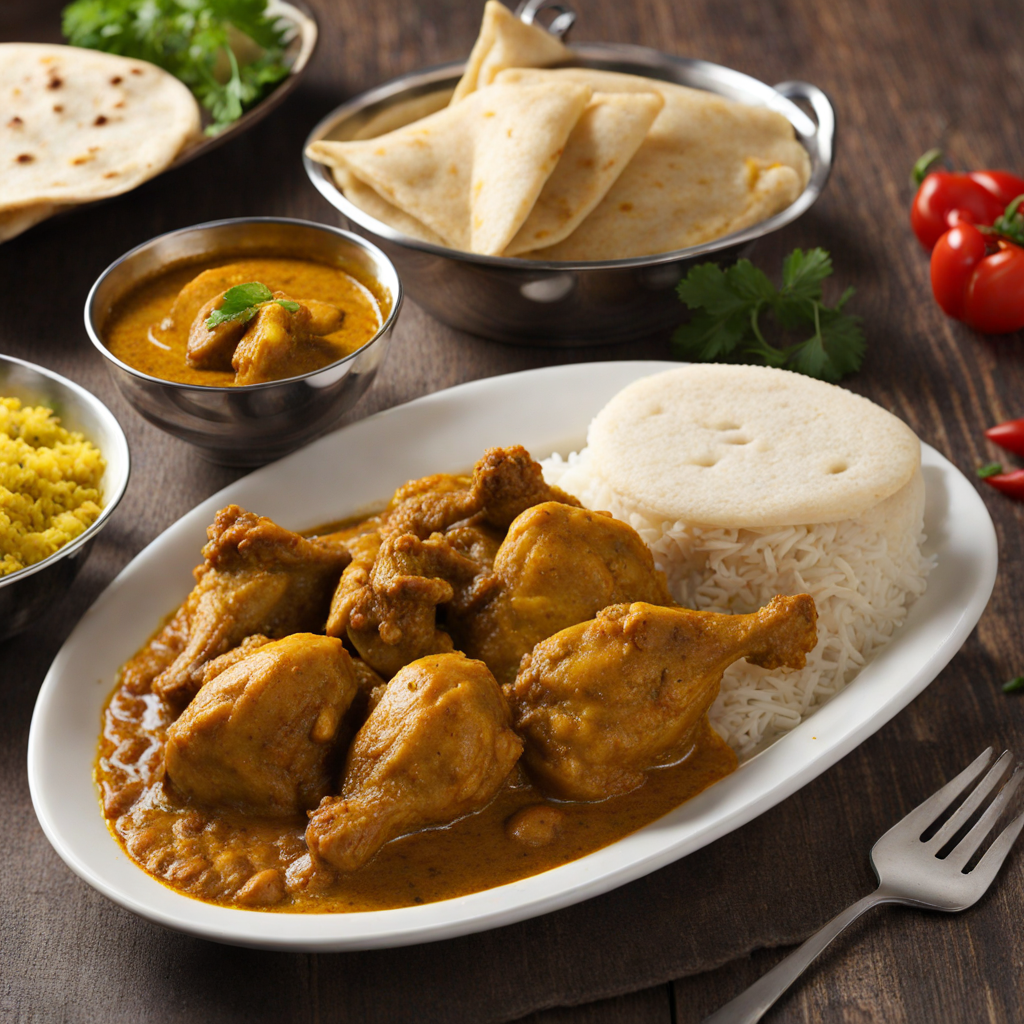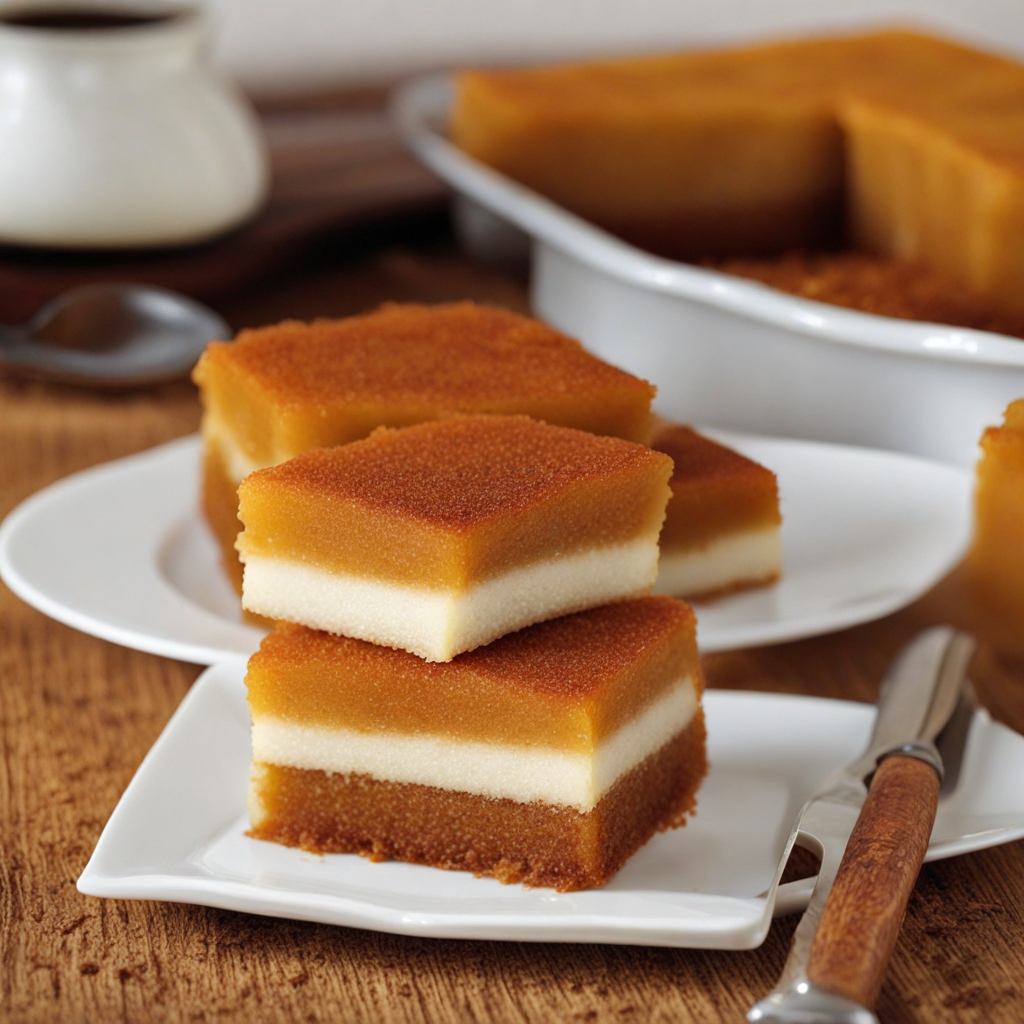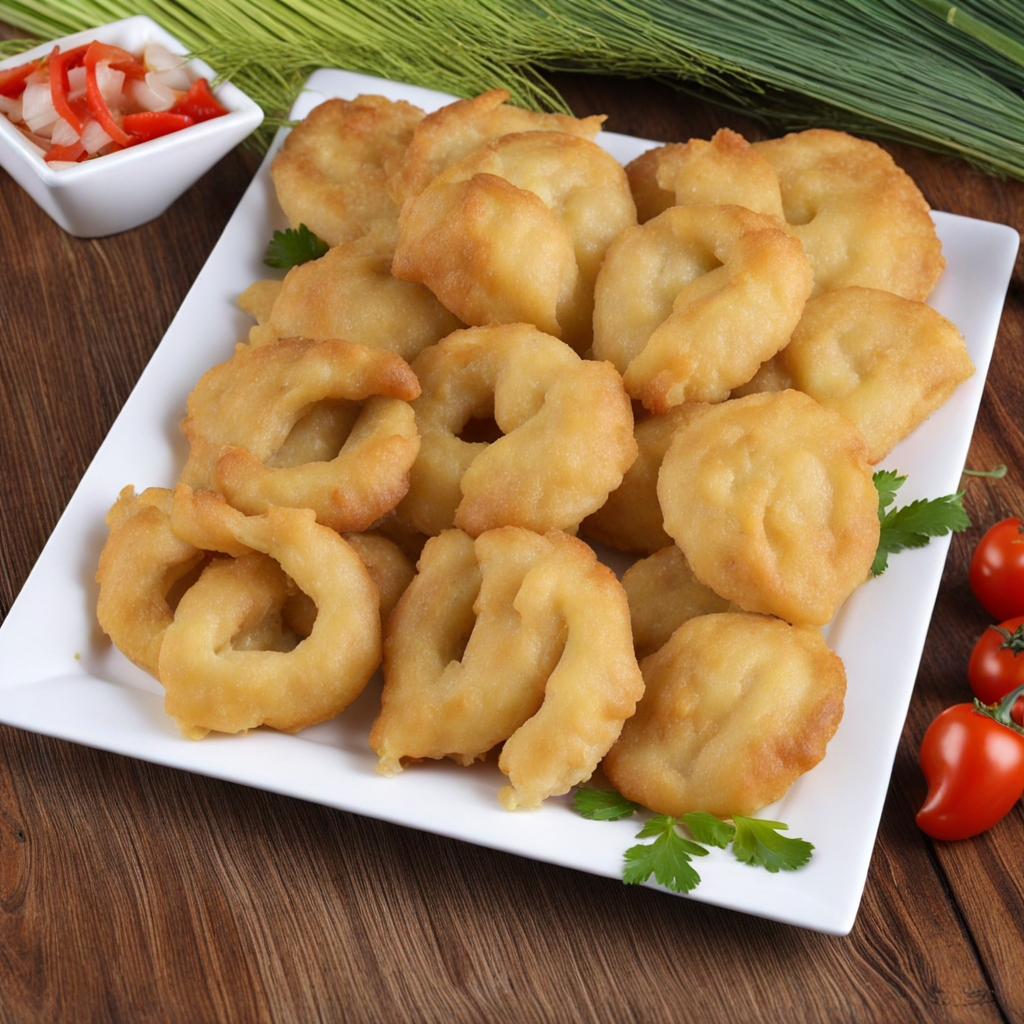Curry Chicken
Curry Chicken from Guyana is a vibrant and aromatic dish that showcases the rich culinary heritage of the country. This dish is characterized by its bold flavors, thanks to a blend of spices including turmeric, cumin, coriander, and garam masala. The chicken is marinated in these spices, allowing the flavors to deeply penetrate the meat, resulting in a tender and succulent bite. The addition of garlic, ginger, and onions enhances the complexity of the dish, creating a fragrant base that tantalizes the senses. As the chicken cooks, it absorbs the warm, earthy flavors of the spices while simmering in a luscious sauce made from coconut milk or tomatoes. The sauce is typically thick and creamy, enveloping the chicken in a comforting embrace. This dish is often accompanied by sides such as rice, roti, or boiled plantains, which perfectly complement the rich sauce and provide a satisfying balance to the meal. The experience of tasting Guyanese Curry Chicken is not just about the flavor; it also embodies the warmth of the culture. Each bite delivers a harmonious blend of spices that evoke the tropical landscapes of Guyana. Whether enjoyed at a family gathering or as a comforting weeknight dinner, Curry Chicken is a celebration of friendship and hospitality, inviting you to savor the unique culinary traditions of this vibrant nation.
How It Became This Dish
The Delicious Journey of Curry Chicken in Guyana: A Culinary Heritage Curry chicken, a beloved dish in Guyana, serves as a vibrant testament to the country’s rich multicultural tapestry. With its roots firmly planted in the Indian diaspora, this dish has evolved into a culinary symbol that reflects the intersection of various cultural influences, history, and adaptation. To understand the significance of curry chicken in Guyanese cuisine, it is essential to explore its origins, cultural importance, and how it has developed over time. #### Origins: The Arrival of Indian Indentured Laborers The story of curry chicken in Guyana begins in the 19th century during the period of indentured labor. After the abolition of slavery in 1834, sugar plantations in British Guiana (as Guyana was known) faced severe labor shortages. To address this, colonial authorities turned to India, recruiting laborers to work in the sugar fields. Between 1838 and 1917, approximately 240,000 Indian laborers arrived in Guyana, bringing with them their culinary traditions, including the use of spices, rice, and legumes. Among the spices they introduced was curry powder, a blend that became a cornerstone in their cooking. In India, curry refers to a variety of dishes characterized by the use of spices, herbs, and flavors, but the term 'curry' as understood in Western contexts typically refers to the spice mix itself. The Indian indentured servants used curry powder to prepare a range of dishes including meats, lentils, and vegetables, setting the stage for curry chicken to become a staple in Guyanese households. #### Cultural Significance: A Symbol of Unity and Diversity Curry chicken quickly transcended its origins, becoming not just a dish but a cultural symbol of Guyana’s diversity. The country’s population is a vibrant mosaic of ethnicities, including Indigenous peoples, Africans, East Indians, Chinese, and Europeans. Each group has contributed unique flavors and cooking techniques, making Guyanese cuisine a true reflection of its multicultural society. In this context, curry chicken embodies a sense of unity among different cultures. It is often served during communal gatherings, family celebrations, and festive occasions such as Diwali, Eid, and Christmas. The dish is more than just food; it represents shared values and traditions among communities. Whether served with rice, roti, or rice and peas, curry chicken is a focal point of social interactions, evoking memories and fostering connections. #### Development Over Time: From Indian Roots to a National Staple As Guyana evolved, so did the preparation and presentation of curry chicken. In its early days, the dish was typically made using traditional Indian methods and spices. The base usually consisted of onions, garlic, ginger, and a variety of spices such as turmeric, cumin, and coriander. However, over time, local ingredients and cooking styles began to influence the dish, resulting in a distinctly Guyanese version of curry chicken. One notable adaptation is the incorporation of local ingredients such as thyme, scallions, and peppers, which add depth and complexity to the flavor. Additionally, the use of coconut milk became a popular variation, lending a creamy texture and sweetness that balances the heat of the spices. The cooking method, too, has evolved; while some still prefer the traditional slow-cooking method, many Guyanese have embraced quicker, more modern techniques that accommodate the fast-paced lifestyles of today. Moreover, curry chicken has found its way into street food culture, where vendors serve it in various formats, including curry wraps or as part of a platter with rice and salad. This evolution has made the dish accessible to all, regardless of socio-economic status, reinforcing its position as a beloved national dish. #### The Global Influence of Guyanese Curry Chicken As the Guyanese diaspora has spread across the globe, so has the popularity of curry chicken. In cities with significant Guyanese communities, such as Toronto, New York, and London, curry chicken has become a culinary ambassador, introducing the flavors of Guyana to a broader audience. Restaurants and food trucks specializing in Guyanese cuisine often feature curry chicken prominently on their menus, catering to both nostalgic expatriates and curious food lovers. Social media platforms have also played a pivotal role in sharing recipes and cooking techniques, allowing home cooks to recreate the dish in different parts of the world. The adaptability of curry chicken means that it can be easily modified to suit various dietary preferences, making it a versatile option for many. #### Conclusion: A Dish That Tells a Story Curry chicken is more than just a dish; it is a narrative woven into the fabric of Guyanese society. It tells the story of migration, adaptation, and cultural synthesis. From its origins in the kitchens of Indian indentured laborers to its current status as a national treasure, curry chicken embodies the spirit of Guyana—a fusion of flavors, traditions, and identities. As it continues to evolve, curry chicken remains a beloved staple in Guyanese households and a point of pride for its people. Each pot of curry simmering on the stove carries with it the memories of generations, an aromatic reminder of resilience, heritage, and the power of food to bring people together. In every bite of curry chicken, one can taste the history of the land and its people—a true culinary heritage that continues to thrive and inspire. Whether enjoyed at a family gathering or a bustling street food stall, curry chicken is a dish that transcends time and place, making it an enduring symbol of Guyana’s rich and diverse culinary landscape.
You may like
Discover local flavors from Guyana







